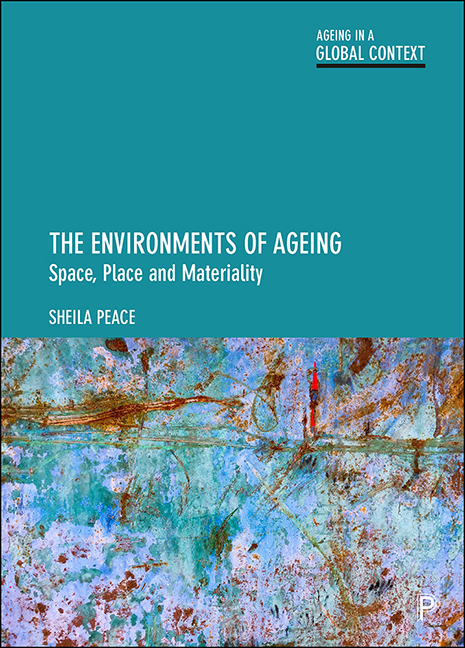Book contents
- Frontmatter
- Dedication
- Contents
- List of figures and tables
- Research summaries
- List of acronyms
- About the author
- Acknowledgements
- Series editors’ preface
- Preface: understanding the structure
- 1 Person and environment
- 2 Theoretical development
- 3 The global context
- 4 Environmental living
- 5 Housing in later life
- 6 Housing histories, housing options
- 7 Alternative environments: specialised housing (with care)
- 8 Care home living: a form of long-term care
- 9 Methodological development
- 10 Rethinking the spatiality of ageing
- Glossary of terms
- References
- Index
1 - Person and environment
Published online by Cambridge University Press: 15 September 2022
- Frontmatter
- Dedication
- Contents
- List of figures and tables
- Research summaries
- List of acronyms
- About the author
- Acknowledgements
- Series editors’ preface
- Preface: understanding the structure
- 1 Person and environment
- 2 Theoretical development
- 3 The global context
- 4 Environmental living
- 5 Housing in later life
- 6 Housing histories, housing options
- 7 Alternative environments: specialised housing (with care)
- 8 Care home living: a form of long-term care
- 9 Methodological development
- 10 Rethinking the spatiality of ageing
- Glossary of terms
- References
- Index
Summary
Introduction
Environmental gerontologists who are concerned with researching the context of adult human experience and behaviour in later life regard person/environment (P–E) interaction as pivotal to ageing well. Consequently, Chapter 1 opens with the actor and their stage – the separate characteristics of older people and their environment based on lives in Western developed countries. By discussing these separately, they are then brought together to recognise interaction between them in everyday experiences. Finally, we move beyond this individualised interaction within specific contexts, recognising that P–E also must be addressed at a collective level. This has implications both in terms of levels of interaction and the methodology by which the evidence base and research methods, particularly participatory studies, are supported.
Under the heading of Person (P), attention is paid to the boundaries of ageing, in other words how an older person is defined in this text. Consideration is given to ‘successful’ or ‘active’ ageing and proposed definitions of ‘third’ and ‘fourth’ ages. Such definitions are grounded in a heterogeneity that sees each individual as uniquely gendered and ethnically, sexually and culturally distinct. Late life experience is built on an understanding of the self that takes a wider life course perspective. All these characteristics have implications for P–E interaction, and awareness of this diversity is necessary before underlying theoretical perspectives are addressed in Chapter 2. Environment (E) then comes to the fore, with the central concerns being space, place and materiality. The underlying relationship between space and place as social, economic, psychological and cultural is unpacked before public and private domains are examined. The issue of materiality is then considered through both material and immaterial worlds, leading to personal experiences of the attachment to place. This discussion captures both global and local contexts.
The chapter ends by bringing the two main components centre stage to discuss their interface – how an older person and their particular spatial environment come together through everyday living. Behaviour is examined at a local or ‘micro-’ level and yet by using a biopsychosocial approach, a person's well-being subject to varied concerns relating to their physical and cognitive health is experienced wherever they are.
- Type
- Chapter
- Information
- The Environments of AgeingSpace, Place and Materiality, pp. 1 - 23Publisher: Bristol University PressPrint publication year: 2022

